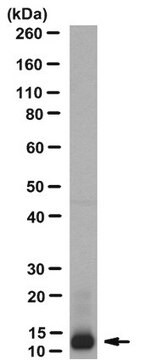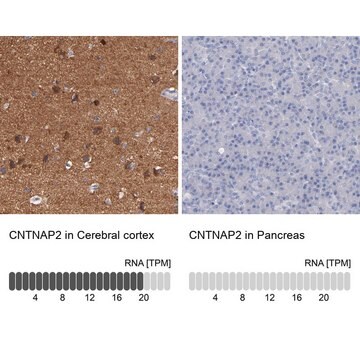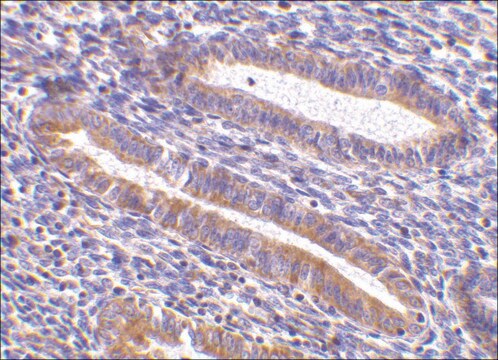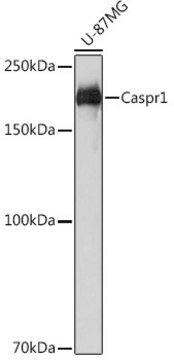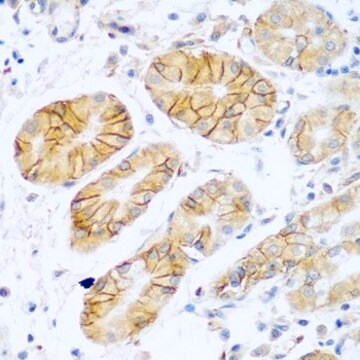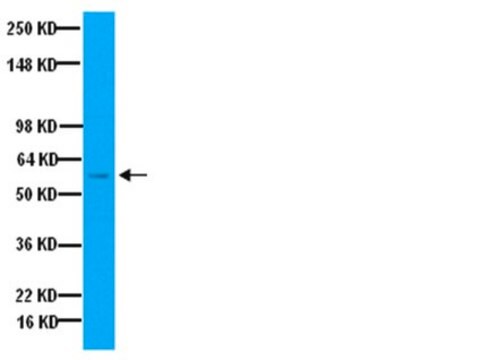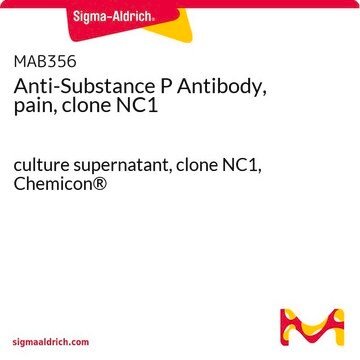ABN1380
Anti-Caspr2 Antibody, extracellular domain
serum, from rabbit
Synonym(s):
Contactin-associated protein-like 2, Cell recognition molecule Caspr2
About This Item
Recommended Products
biological source
rabbit
Quality Level
antibody form
serum
antibody product type
primary antibodies
clone
polyclonal
species reactivity
mouse
species reactivity (predicted by homology)
human (based on 100% sequence homology)
technique(s)
immunocytochemistry: suitable
western blot: suitable
NCBI accession no.
UniProt accession no.
shipped in
ambient
target post-translational modification
unmodified
Gene Information
human ... CNTNAP2(26047)
General description
Specificity
Immunogen
Application
Immunocytochemistry Analysis: A representative lot detected Caspr2 immunoreactivity at the juxtaparanodal region around the nodes of Ranvier by indirect immunofluorescent staining of teased fibers prepared from paraformaldehyde-fixed, desheathed wild-type, but not Caspr2-knockout, mouse sciatic nerves (Gordon, A., et al. (2015). Mol. Cell. Sci. In press).
Western Blotting Analysis: A representative lot detected a lower Caspr2 level in brain tissue lysates from mice with heterozygous Caspr2-knockout than wild-type mice, while no Caspr2 expression was detected in brain samples from mice with homozygous Caspr2-knockout (Gordon, A., et al. (2015). Mol. Cell. Sci. In press).
Neuroscience
Quality
Western Blotting Analysis (WB): A 1:5000 dilution of this antibody detected Caspr2 in 10 µg of mouse brain tissue lysate.
Target description
Physical form
Storage and Stability
Handling Recommendations: Upon receipt and prior to removing the cap, centrifuge the vial and gently mix the solution. Aliquot into microcentrifuge tubes and store at -20°C. Avoid repeated freeze/thaw cycles, which may damage IgG and affect product performance.
Other Notes
Disclaimer
Not finding the right product?
Try our Product Selector Tool.
Storage Class Code
12 - Non Combustible Liquids
WGK
WGK 1
Flash Point(F)
Not applicable
Flash Point(C)
Not applicable
Certificates of Analysis (COA)
Search for Certificates of Analysis (COA) by entering the products Lot/Batch Number. Lot and Batch Numbers can be found on a product’s label following the words ‘Lot’ or ‘Batch’.
Already Own This Product?
Find documentation for the products that you have recently purchased in the Document Library.
Our team of scientists has experience in all areas of research including Life Science, Material Science, Chemical Synthesis, Chromatography, Analytical and many others.
Contact Technical Service